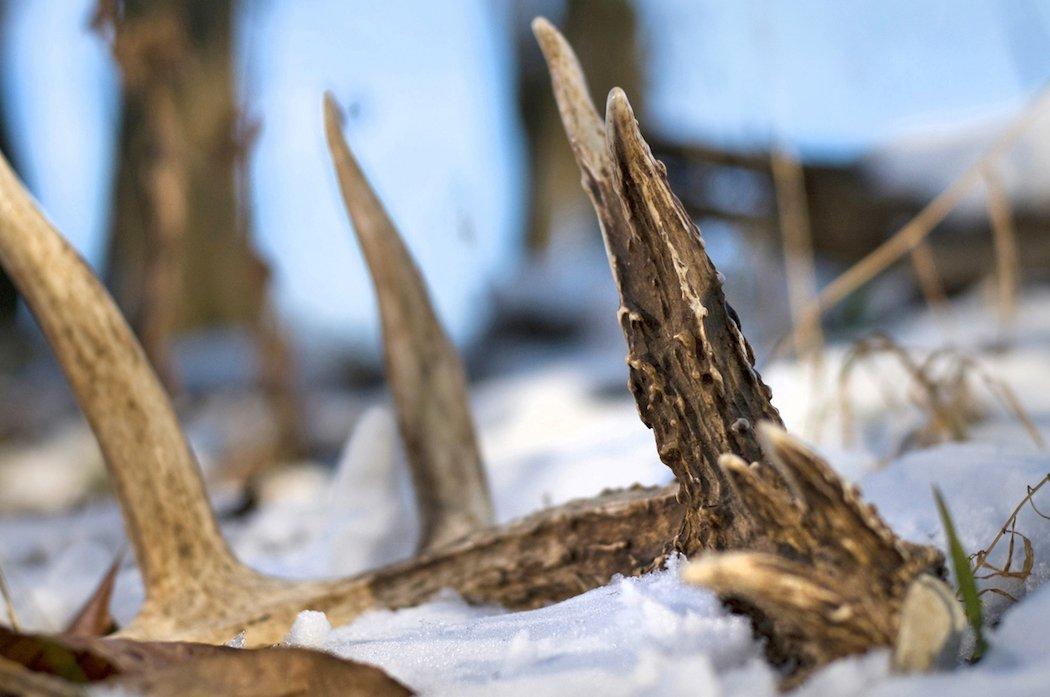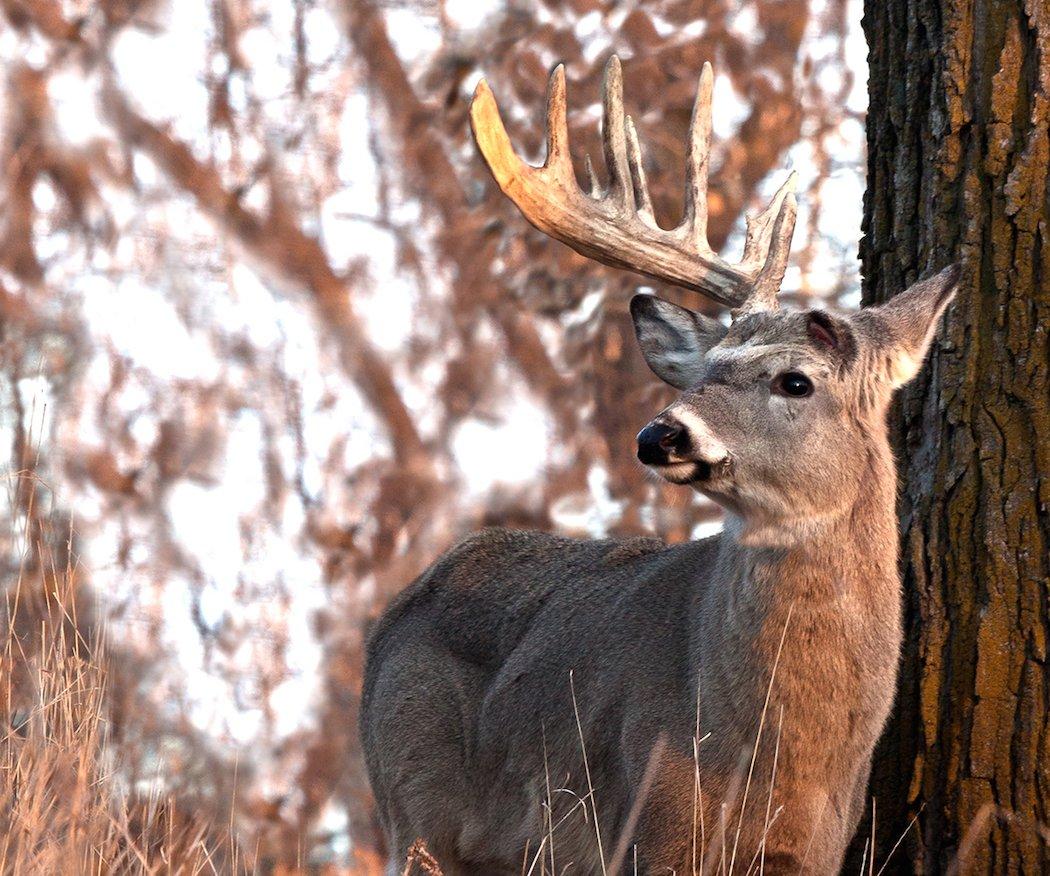We may not like it. But it happens every year. Deer season must come to a close. Then, bucks shed their antler…and we move in to pick them up. Here’s a little more insight on how deer grow and shed antlers as well as how to find them once on the ground.
Table of Contents
THE ANTLER GROWING PROCESS
The antler-growing process begins almost as soon as the antlers are dropped. Sometime in early spring, velvet-covered antlers begin to protrude from the pedicles. Growth peaks in late August throughout most of the whitetail range. Most bucks shed their velvet between mid-August and mid-September. Increasing levels of testosterone cause their velvet to peel off. Then—in late winter after the rut is over—bucks shed their antlers.
HOW BUCKS SHED THEIR ANTLERS
Whitetails shed their antlers like many species in the deer family. There are several factors that play into this biological- and chemical-based occurrence.

Geographical location also plays a role because it dictates climate. Depending on where the deer are will dictate what weather conditions they are exposed to. Extreme cold causes deer to shed their antlers sooner than milder conditions.
Nutrition and food source availability factor in, too. Deer suffering from malnutrition are subject to shedding sooner than healthier whitetails. Years with severe mast crop failures—like this year—can be a major player if no other food sources are available.
The fourth—and final major factor—is stress from the rut. Years that produce harsh rutting conditions for bucks cause bucks to shed sooner than usual. Areas with uneven buck-to-doe ratios dump bigger loads on bucks. Does get missed because there aren’t enough bucks to breed them in a timely manner. Therefore, the rut gets stretched out and lasts longer.
Once late winter arrives, the antler base loosens, and then the antler falls off. All of the factors above cause the connective tissue beneath the base of the antler to degenerate even faster.
WHERE TO FIND SHED ANTLERS
Shed hunting has become the latest buzz in the deer hunting world. You have to put miles on your boots to find them. But put the right miles. There are certain areas that tend to produce more sheds than others. Here are those prime spots.
Bedding Areas
- Cedar thickets
- South- and east-facing slopes
- CRP fields
- Field-grass beds
- Fingers of trees
Travel Routes
- Fence crossings
- Ditch crossings
- Creek crossings
Feeding Destinations
- Crop fields
- Food plots
- Pockets of mast crop
- Water sources
TIPS TO FIND SHED ANTLERS
It’s best to hunt smart, not hard. The same goes for hunting shed antlers. Just like there are better places to look, there are better ways to find them. Keep these tips in mind.
Tools of the Trade
- Monitor the drop with trail cameras.
- Use binoculars to scan fields and open woodlots.
- Ride a four wheeler while looking in large fields.
Methods of Shed Hunting
- Use a shed dog.
- Look for the tip of an antler, not the entire thing.
- Take someone who knows the ropes.
- Look on rainy days. Antlers shine better then.
- Shed hunt where you would late-season deer hunt.
- Draw a grid on a map and search each quadrant.
- Change perspective. Crouch down. Stand up. Find more sheds.
The annual antler drop is here. If it’s not in your area, it soon will be. Take time this post-season to get out and look for shed antlers.









































